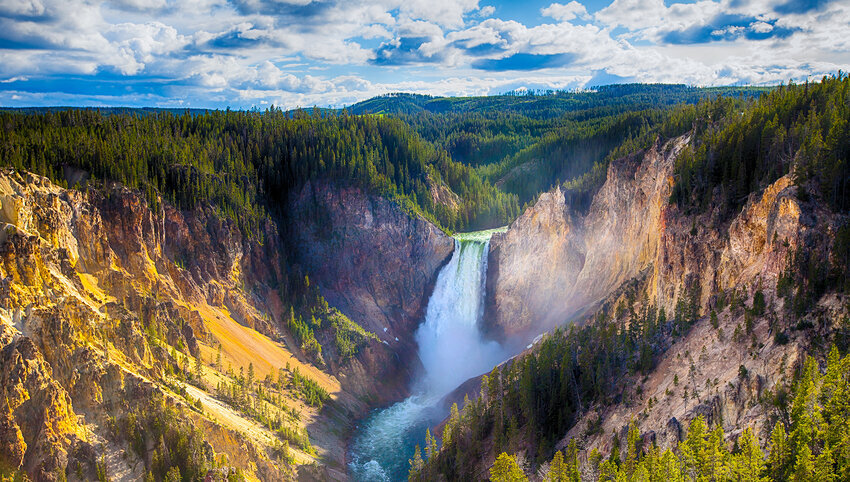TLC once warned us “Don’t go chasing waterfalls,” but in reality, waterfalls are some of the most sought-after natural sites in the world. A waterfall can be an awe-inspiring end to a tough hike, or a place to set up a picnic after taking a stroll through the forest. While there are no shortages of waterfalls on Earth, there are many you can explore right in the U.S. Here are some of our favorites.
McWay Falls, California
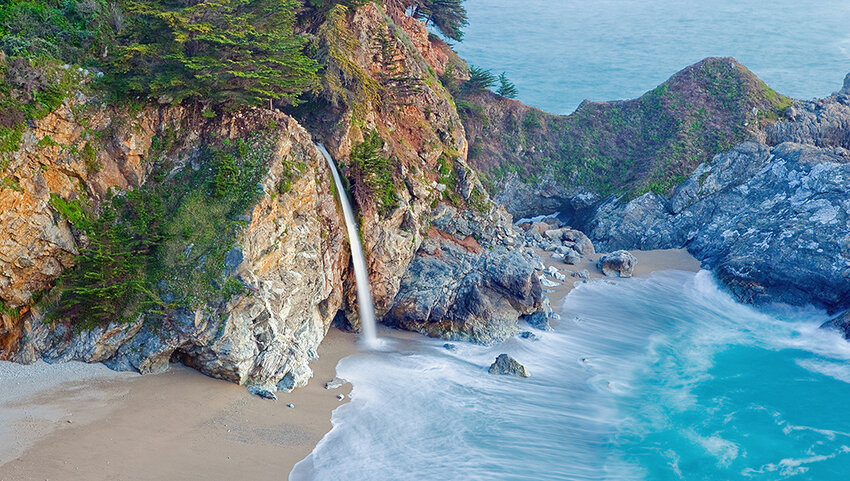
A tiny water spout that punctuates the most famous viewpoint in Big Sur, McWay Falls trickles onto a desolate golden beach, surrounded by turquoise water and pine trees clinging to craggy cliffs. Although you can’t hike down to the waterfall itself, you can see it from the McWay Falls Viewpoint, all a part of the Julia Pfeiffer Burns State Park. This waterfall happens to be an iconic stop on Route 1, one of America’s most famous road trips. This thin ribbon of water once fell straight into the ocean and may do so as the beach begins to erode, but today it strikes directly onto a sandy cove that was created as a result of a landslide.
Palouse Falls, Washington
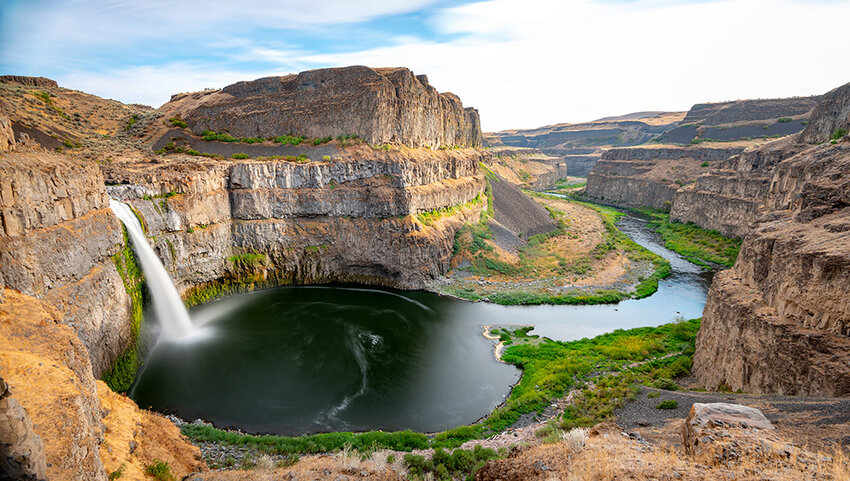
Hidden away in one of the most underrated yet beautiful ecosystems in the U.S., Palouse Falls plummets from its precipice to a swirling whirlpool before connecting with Idaho’s Snake River. The Palouse region of Washington is a stunning and underrated area with rolling verdant hills in spring and amber waves in fall. Palouse Falls punctuates these otherwise barren prairies, offering up striking views and remote splendor that’s harder and harder to come by. It’s easy to view the falls from one of three paved viewing platforms, although Fryxell Overlook is the best.
Havasu Falls, Arizona
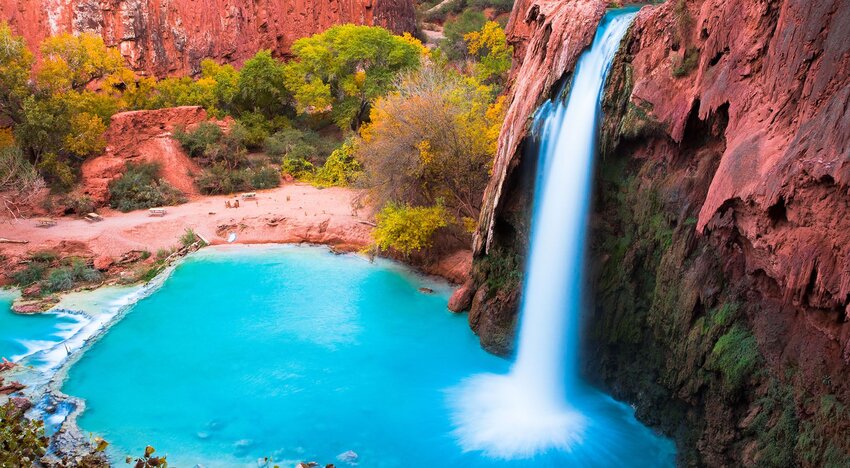
Located on the Havasupai Reservation, Havasu Falls is famous for its vibrant blue-green water, which is due to minerals like calcium carbonate and magnesium. The stunning water contrasts with the rising red rock cliffs around it, creating a colorful scene that draws numerous visitors. Those who wish to take in this unique waterfall, however, should plan significantly in advance: You have to book a 3-day permit in order to take the 10-mile hike to the falls. While the trip isn’t for the novice hiker, it’s certainly a bucket list place to visit.
Multnomah Falls, Oregon

The Columbia River Gorge is a natural wonderland for hikers, and features hundreds of miles of public trails for those seeking to explore all the beauty of the Pacific Northwest. However, the star attraction is this 620-foot waterfall, which is active all year long. For a truly special experience, head to the falls in the spring, when wildflowers on the trail are in full bloom. Just make sure to head out early, as over two million visitors hit up the waterfall each year to take in this natural wonder.
Akaka Falls, Hawaii
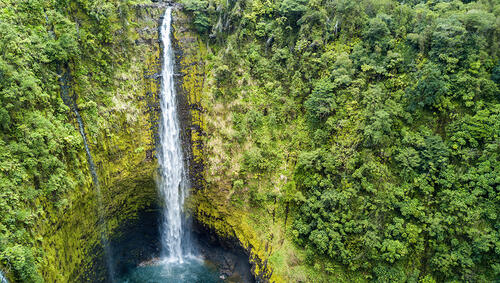
Hawaii’s waterfalls are as plentiful as they are stunning and while some can be difficult to reach or completely elusive, Akaka Falls is both beautiful and easily accessed. Plunging a mighty 442 feet, Akaka Falls is on the Big Island’s eastern coast and is the island's tallest waterfall that you can hike to. The pathway, a 0.8-mile set of stairs and trail, leads visitors to the falls without the need for an intense trek. Lucky for hikers, this trail also reveals a second waterfall, Kahuna Falls, shrouded in jungle and mist. Those who continue along the Hilo Coast will be rewarded with even more waterfalls like Rainbow and Umauma Falls.
Tahquamenon Falls, Michigan
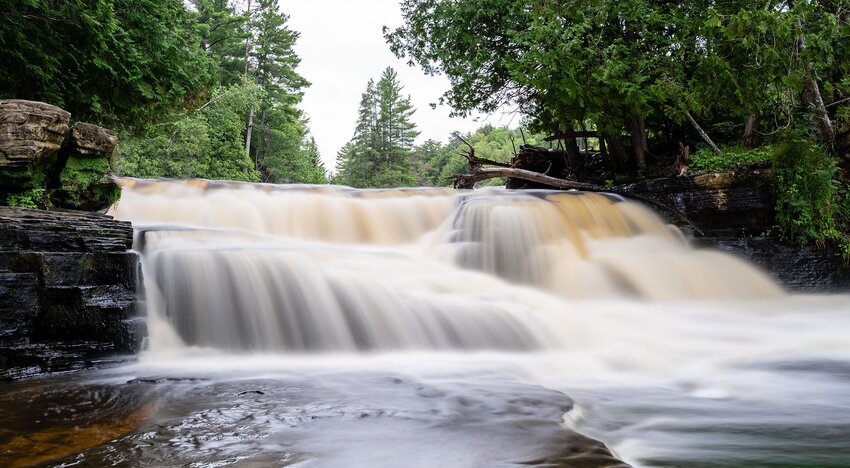
There are actually two waterfalls that make up the Tahquamenon Falls. The Upper Falls is one of the largest waterfalls east of the Mississippi, while four miles downstream is the Lower Falls, which consists of five smaller falls that surround a small island. The amber color of the river supplying the waterfalls comes from tannins leached from the cedar, spruce, and hemlock trees in the swamps drained by the river. As most of the Tahquamenon Falls State Park is undeveloped, you may find quite a bit of wildlife when you go hiking across this 13-acre area, including black bears, coyotes, otters, deer, foxes, porcupines, beavers, and minks.
Bridalveil Falls, California

A start attraction of Yosemite National Park, Bridalveil Falls is aptly named, resembling the elegant cascade of a bride's wedding veil. It’s the first waterfall visitors encounter upon arriving in the Yosemite Valley, and the over 600-foot wonder can be viewed from multiple angles on different hiking trails. Although the main waterfall trail is open year round, those who visit heed this warning: Depending on when you decide to make your trek, you may get wet! In the springtime, the stream thunders due to snowfall — and it’s so strong that it can make it challenging to access the trail. For those planning to visit during the winter months, keep in mind that the trail may be icy — though the view will be no less spectacular.
Ruby Falls, Tennessee

Who says waterfalls have to glisten in the sunshine? Discovered in 1928 within Lookout Mountain in Chattanooga, Tennessee, Ruby Falls is the United States’ tallest and deepest underground waterfall open to the public. Instead of trekking along a trail, visitors can take a glass elevator to the depths of the underground cavern to witness the 260-foot waterfall for themselves. The surrounding cave also includes stalactites and stalagmites, making this one of the most unique waterfalls in the nation.
Yellowstone Falls, Wyoming
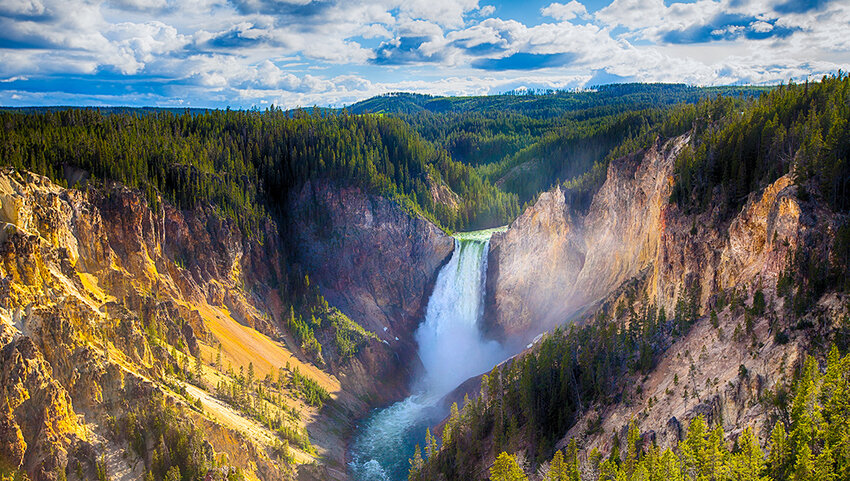
Rushing through the Grand Canyon of Yellowstone, Yellowstone Falls is actually two enormous waterfalls connected by the Yellowstone River, traveling downstream from Yellowstone Lake. This waterfall is known for being festooned in rainbows, reaching across the cascades like banners in the mist. Uncle Tom’s Point is the best way to see the falls up close but Artist Point offers a picture-perfect view of the falls from down the gorge, framed in the very golden rock that gave Yellowstone its name. Winter brings an entirely different perspective to the falls as they often freeze along the edges.
Calf Creek Falls, Utah
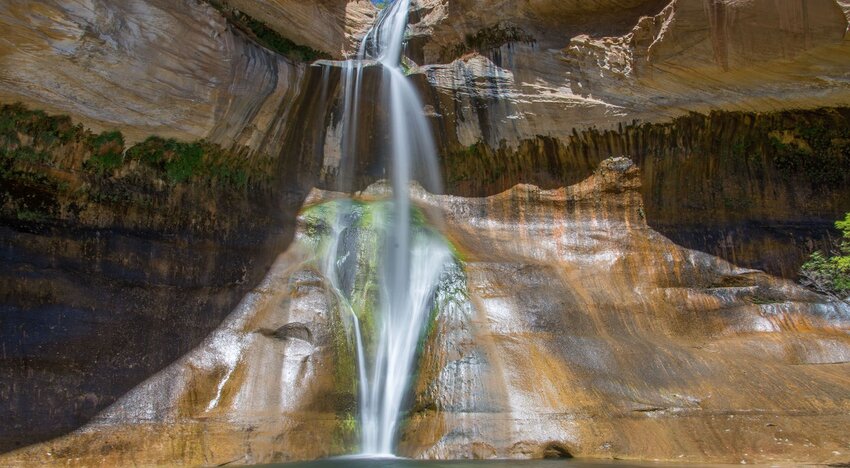
Calf Creek Falls is one of the most popular places for tourists to visit within the Grand Staircase-Escalante area, and for good reason. Upon arrival, you’ll find the 126-foot waterfall cascading into super clear water. The 6.7-mile out-and-back trail is well worth the hike, even in the summer, as the mist from the waterfalls make the area a cool reprieve from the strong Utah sun. Visitors looking to take a dip can cool off in the swimming area right below the falls. Just keep in mind that the pool is a hugely popular destination, so hitting up the trail early in the day will mean less crowds.
Niagara Falls, New York
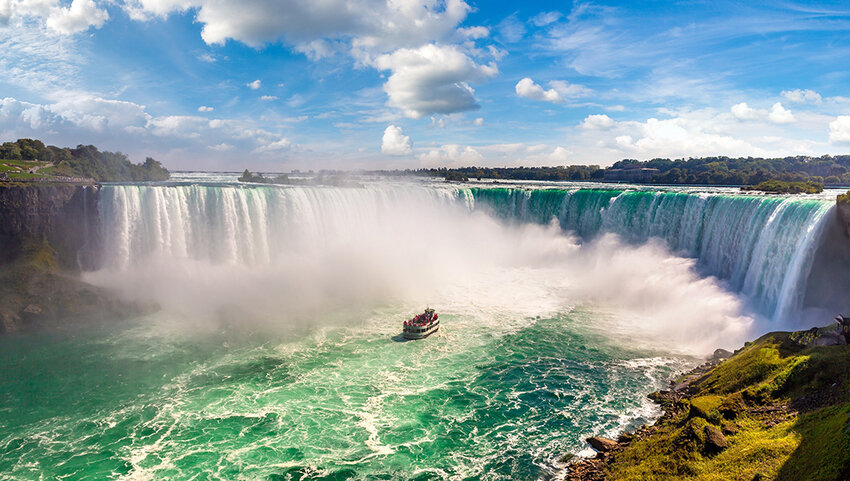
The three falls that makeup Niagara Falls are among the most famous cascades in the world and create a landmark destination in the U.S. Split along the border with Canada, this behemoth series of waterfalls sees 3,160 tons of water rush over the edge every minute. Water from four of the Great Lakes filters through this horseshoe-shaped bend in the Niagara River, making its way slowly to touch its fifth, Lake Ontario, before heading out to the Atlantic. Over 20 million visitors make the trip to Niagara Falls every year to witness its thunderous roar and see the mist rising from miles away, but these falls have been a popular tourist destination since 1812.

